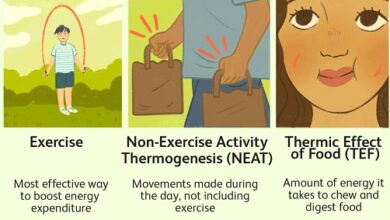What is Ambidextrous Practice brain symmetry and curiosities
Ambidextrous
Firstly, ambidexterity refers to the ability to be equally skilled with both sides of the body . Thus, those who are ambidextrous can write with their left hand and right hand, for example. However, skills are not just limited to writing with two hands or kicking with two feet .
Interestingly, the word originates from the Latin ambi , meaning both, and dext , meaning right. In general, ambidexterity from birth is quite rare, but it can be taught. In addition, those with this configuration perform certain tasks with only one hand.
Therefore, the degree of versatility with each hand is usually what determines ambidexterity. In this way, this ability can be stimulated through activities such as wrestling, swimming and playing musical instruments.
Practice
Although birth ambidexterity is rare, there are several cases of stimulation for the ability. This happens in several cases, for example with left-handers who are forced to exercise the right side of the body due to lack of adaptation to the environment , shame or social pressure.
According to designer Eliana Tailiz, the practice of ambidexterity is positive. That’s because it can improve intelligence and motor coordination, as it stimulates brain activity.
The initiative, however, must start as soon as possible. Once the child is encouraged to work with both sides of the body, the condition can better develop. On the other hand, adults are already conditioned to activities and movements, making the process difficult.
brain symmetry
An ambidextrous brain works from the symmetric domain. Thus, two hemispheres have the same capacity, being able to command similar activities for both sides of the body. However, there are downsides to the functionality.
Symmetrical brain hemispheres balance not only motor skills, but also emotions and feelings. Thus, ambidextrous people (and even left-handers, in some cases), struggle with anger and carry more negative emotions than right-handed people.
The condition may also carry a higher risk of cognitive problems. A survey carried out with 8,000 children in Finland revealed that those who had aptitude for ambidexterity also had greater learning difficulties. In addition, a greater propensity for attention disorders, such as ADHD, was observed.
Curiosities about ambidexterity and the use of hands
Testosterone : there are studies that indicate that testosterone is responsible for defining symmetrical brain formations and therefore ambidexterity.
Sexuality : In a survey of 255,000 people, Dr. Michael Peters of the University of Guelph noticed that among ambidextrous people there is a higher occurrence of homosexuality and bisexuality.
Practice of sports : in activities such as wrestling, swimming and football, which require good skills with hands and feet, ambidexterity is stimulated. In addition, practice is recommended for musical instrument studies.
Synesthesia : the ability to mix senses in the perception of the world is more frequent in ambidextrous people.
Famous Ambidextrous : Among some of the most famous ambidextrous are Leonardo DaVinci , Benjamin Franklin, Pablo Picasso and Paul McCartney.
Find out if you’re ambidextrous with this hands test
Respond to each item with right, left, or both. If more than eight questions are answered as both, you may be ambidextrous.
- Hand using comb or brush to comb hair
- Hand you hold the toothbrush
- Sleeve of the garment you wear first
- Which way do you hold the soap while showering?
- With which you dip something in milk, sauces, or other liquids
- The side you hold the bottle when filling a glass
- How do you tear coffee and sugar envelopes, as well as similar packaging
- Which way do you hold the match to light it?
- The one used to hold fruit when using a juicer
- Which stirs food in the pan
- The one that places itself above the other when clapping
- Which side do you place over your mouth when making a hush sign or yawning
- What hand do you throw something with, like rocks or javelins
- What is used to roll dice
- With which hand do you stay down when holding a broom while sweeping?
- hand used to write
- Hand with which you use a stapler
- Hand to open a non-automatic umbrella
- Hand with which you wear hats, bonnets, and the like
- Arm that is on top when crossed
- Foot used to kick balls
- Foot with which you hop on one foot
- Ear where you place your phone or cell phone
- Eye you look into peepholes or other similar holes



